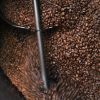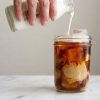A blog for the coffee lovers
Welcome to the PureBean Blog. Stay updated with our latest news & information.

Sweet or Sour: The Science of Tasting Espresso
Have you ever tasted a coffee and wondered why it tastes the way it does? There are a number of factors that go into making a good coffee and understanding the fundamentals may drastically improve your morning brew.
Most cafés these days take a very scientific approach in regards to espresso testing and tasting espresso.
By using these methods, we seek to create a profile for coffee. You may find that some coffee blends differ in taste from café to café, some tasting strong, weak, bitter, sour or sweet.
ORIGINS
This is usually down to the geographic origins of coffee beans that make up the components of the blend. It may also be dependant on how the coffee is brewed and the level of skill of the barista.
Contrary to popular belief, coffee does not have to be bitter, sour or even sweet.
A range of tasting notes exist and are most observable in espresso ranging from plum, citrus, macadamia, stone-fruits, green apple, chocolate, fermented fruit, toffee, caramel and many more. Just like the wine industry, coffee has recently become an artisan form of creative expression for barista’s around the world.
One of the main factors that influence the taste of espresso is the origin. Whether you taste a coffee from say Kenya, Ethiopia, El Salvador, East Timor or Nicaragua, the flavours will vary from coffee to coffee. If you taste a blend of coffee origins you might find the espresso exhibits a complex blend of flavours due to the differing origin components.
THE PROCESS
The other main factor that influences the taste of espresso is the way it is extracted. If a coffee is under-extracted it will most likely taste sour and have a strange, unpleasant tanginess on the tongue.
If a coffee is over-extracted the coffee will most likely taste bitter, and have a long lingering finish in the mouth.
Don’t fret!
The scientific approach outlines below can help to remedy these issues and result in a coffee that tastes balanced, flavoursome and delicious. The approach consists of three variables that are measured and work in unison to create an ideal extraction.
They are Dose, Yield, and Time.
- Dose: Refers to the amount of coffee grind that you are putting into the group handle (portafilter) measured in grams.
- Yield: Refers to the amount of liquid that is extracted after the shot has run its course – measured in grams or millilitres.
- Time: Is the time from the start of the extraction to the end of the extraction – measured in seconds.
TESTING THE FORMULA
Electronic scales are used to tare and measure the amount of coffee dosed in and liquid extracted out.
For example a common brew ratio for espresso is:
22g in (dose), 30ml out (yield), in 30 seconds (time). Expressed as 22:30:30.
The starting dose will depend on the basket size you are using, however it is commonly accepted that 2 grams more than the basket size is a good starting point. So if the basket size is 20g, you would start with a 22g dose.
Let’s assume this coffee tastes a little sour when you first drink it – a common problem. A good idea would be to focus on one variable at a time.
By leaving the dose at 22g, but making a grind change slightly finer, you will notice the time of extraction will increase. This is due to the grind particles being more closely packed together which means the water will move more slowly through the coffee.
Your new ratio may be 22:30:35
You taste this espresso and you might notice a marked improvement. However, instead of sourness, you now have a slightly bitter finish to the taste of the espresso. To remedy this, you change the grind to a little bit coarser in order to balance it out.
You might now have reached a ratio of:
22:30:33
This espresso might be balanced and really delicious!
I know what you’re thinking – only two seconds makes that much of a difference?
The answer is yes! One second of difference can make a significant change in the taste of your espresso.
If you feel like the coffee is lacking body, you may need to dose a little higher.
23:30:30
Dosing higher will increase the strength of the coffee you are extracting, and provide more body, sweetness and flavour. However, once the dose has changed you may need to go through and balance out those flavours again using the process mentioned earlier, until you find the right balance.
Another way of changing the way your espresso tastes is by altering the yield. If your machine has a manual button setting, you would press this button to start and stop the extraction – when the yield is measured greater or less than the preset amount.
An example of pressing it early:
22:26:30
An example of pressing it late:
22:35:30
Using these little tricks of the trade, and understanding the scientific variables that go into espresso and any coffee brewing method will drastically improve the way your espresso tastes.
Have you figured out the best ratio for your machine and beans?
Enjoy the process and, most of all, enjoy the coffee!
Have you ever tasted a coffee and wondered why it tastes the way it does? Tasting espresso is a scientific process
the-science-of-tasting-espresso





